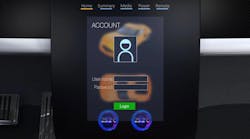Maxim’s MAX16923 power-management IC (PMIC) gives designers of automotive electronic systems the ability to expand the number of displays per vehicle while reducing design complexity. The four-output display PMIC with watchdog timer replaces four or five discrete ICs, significantly shrinking the area consumed for display power management—up to 50% in some cases. At the same time, it enables automotive designers to increase the number of displays from two to five per vehicle, or even more.
The number of automotive displays per vehicle continues to grow as OEMs festoon their products with advanced instrument clusters, infotainment, head-up displays, center displays, rear-seat entertainment, and smart-mirror applications. Designers struggle with the complexity of adding these screens because the required power-supply circuitry competes for space with a myriad of other electronic systems inside the car.
The MAX16923 offers high integration with four power rails, featuring both a high-voltage and low-voltage buck converter, a high-voltage and low-voltage low-dropout (LDO) regulator, electromagnetic-interference (EMI) mitigation, and a watchdog timer in a single IC. Its integration of five discrete functions can reduce an automotive power solution from four or five ICs down to one chip, without making the temperature rise significantly. In addition, EMI mitigation and the watchdog timer improve the reliability of each display.
The MAX16923 automotive power-management IC is available at Maxim’s website; pricing available upon request. The MAX16923EVKIT# evaluation kit is priced at $50.
Maxim Integrated Products, www.maximintegrated.com

